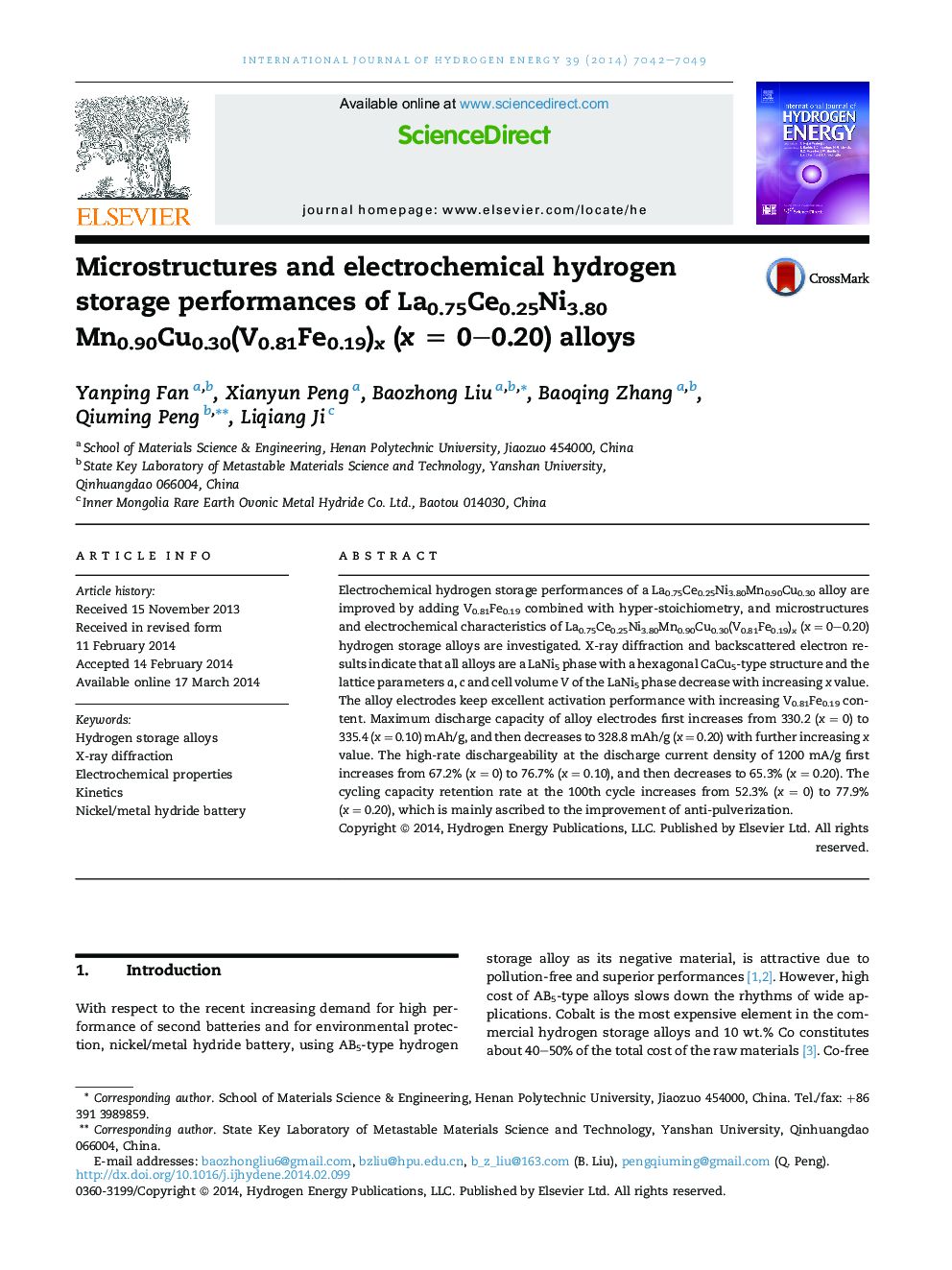| Article ID | Journal | Published Year | Pages | File Type |
|---|---|---|---|---|
| 1273458 | International Journal of Hydrogen Energy | 2014 | 8 Pages |
•Commercial V0.81Fe0.19 is cheaper than V, and has lower melt point than pure V.•Adding VFe with hyper-stoichiometry improves the electrochemical properties.•Alloy electrodes keep excellent activation property with increasing VFe.•Alloy with x = 0.10 exhibits the best discharge capacity and HRD.•Cycling stability of alloy electrode increases with increasing x value.
Electrochemical hydrogen storage performances of a La0.75Ce0.25Ni3.80Mn0.90Cu0.30 alloy are improved by adding V0.81Fe0.19 combined with hyper-stoichiometry, and microstructures and electrochemical characteristics of La0.75Ce0.25Ni3.80Mn0.90Cu0.30(V0.81Fe0.19)x (x = 0–0.20) hydrogen storage alloys are investigated. X-ray diffraction and backscattered electron results indicate that all alloys are a LaNi5 phase with a hexagonal CaCu5-type structure and the lattice parameters a, c and cell volume V of the LaNi5 phase decrease with increasing x value. The alloy electrodes keep excellent activation performance with increasing V0.81Fe0.19 content. Maximum discharge capacity of alloy electrodes first increases from 330.2 (x = 0) to 335.4 (x = 0.10) mAh/g, and then decreases to 328.8 mAh/g (x = 0.20) with further increasing x value. The high-rate dischargeability at the discharge current density of 1200 mA/g first increases from 67.2% (x = 0) to 76.7% (x = 0.10), and then decreases to 65.3% (x = 0.20). The cycling capacity retention rate at the 100th cycle increases from 52.3% (x = 0) to 77.9% (x = 0.20), which is mainly ascribed to the improvement of anti-pulverization.
